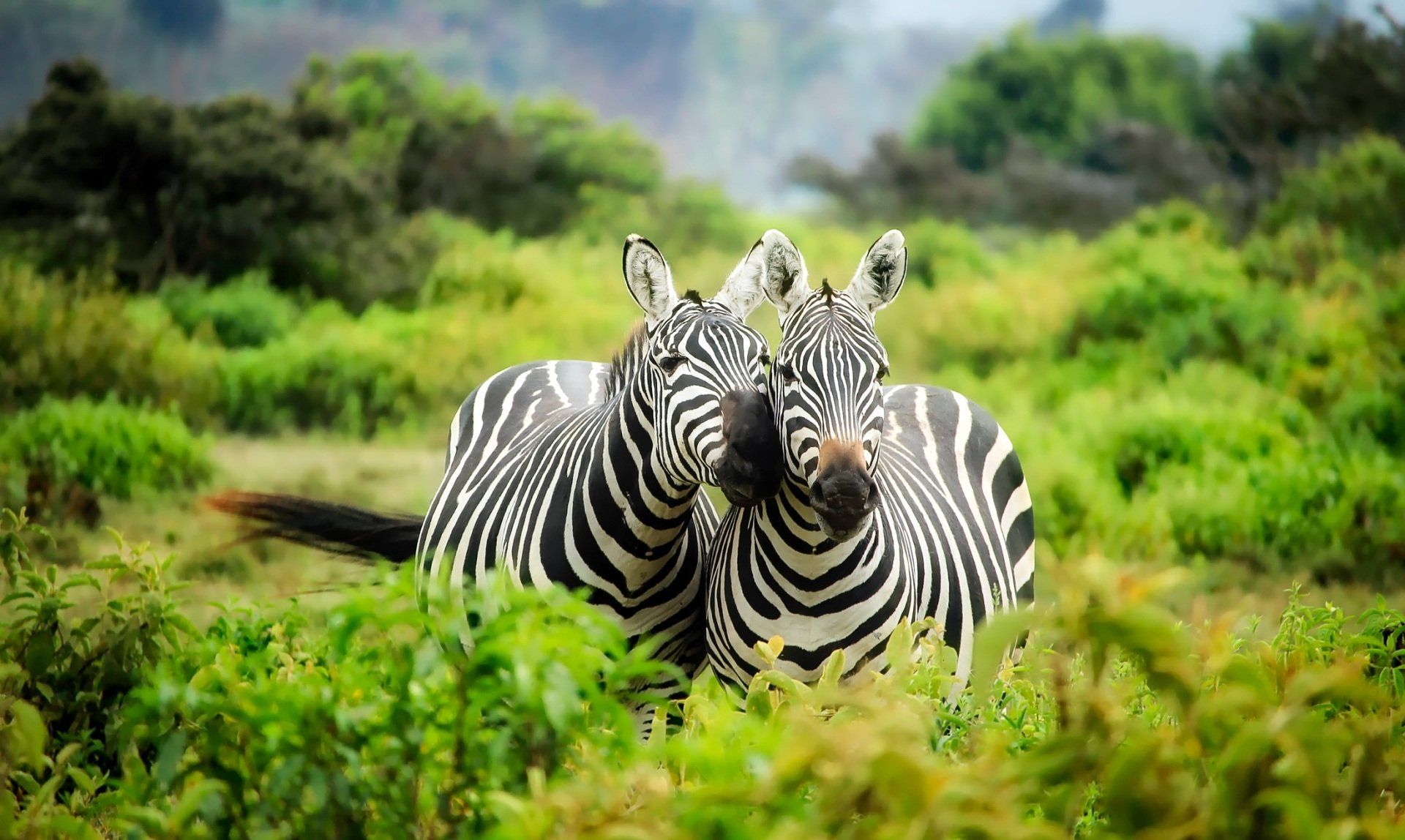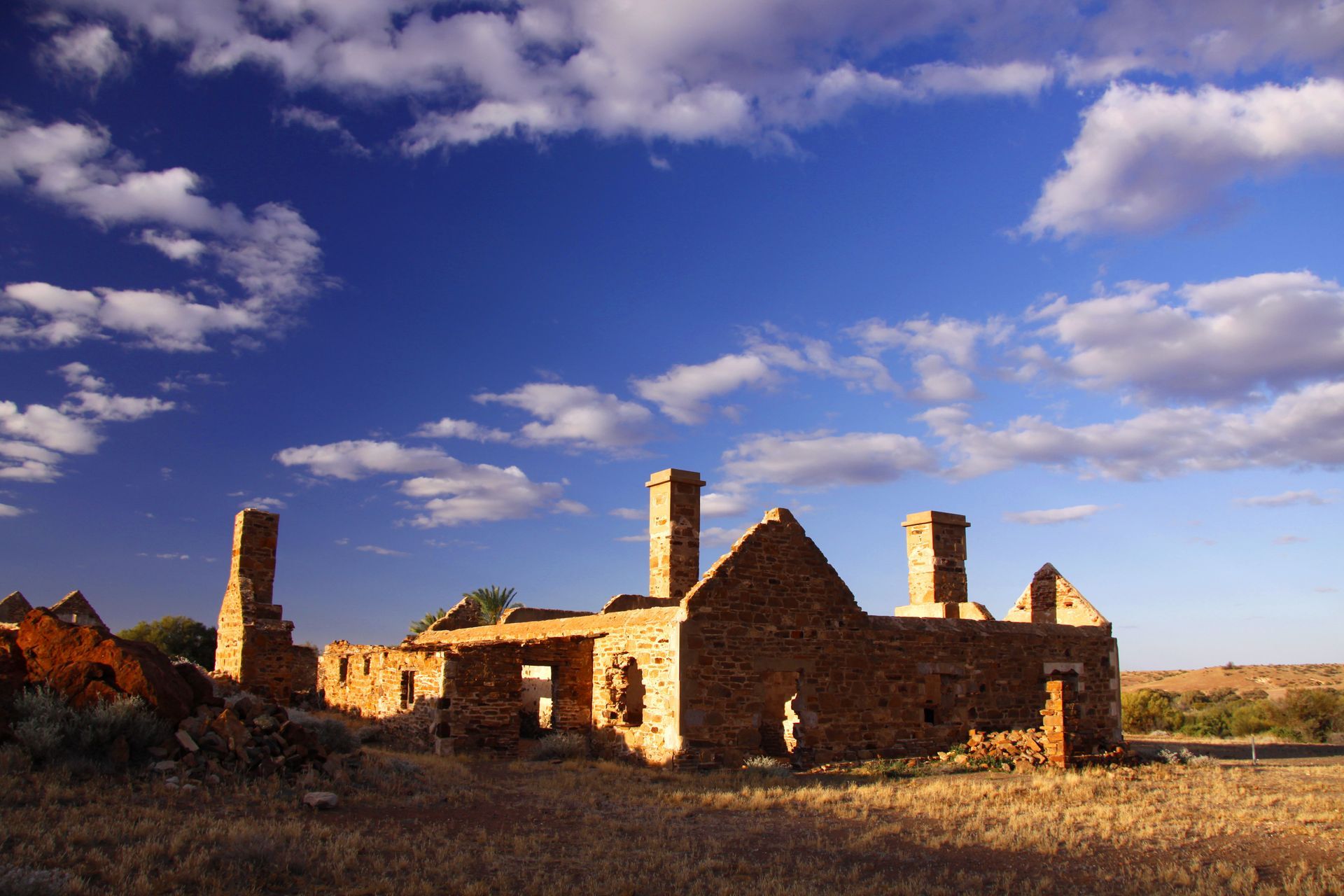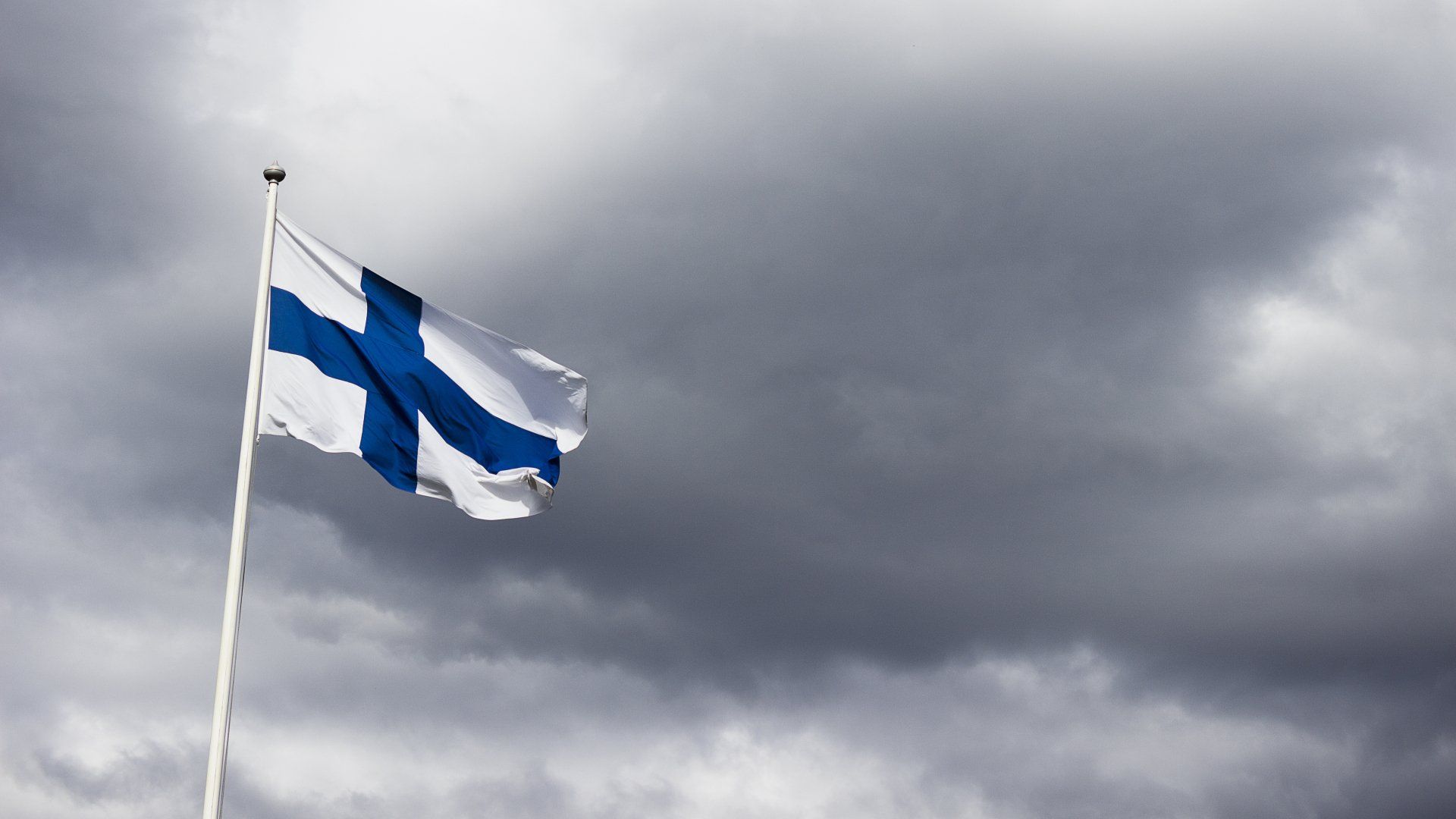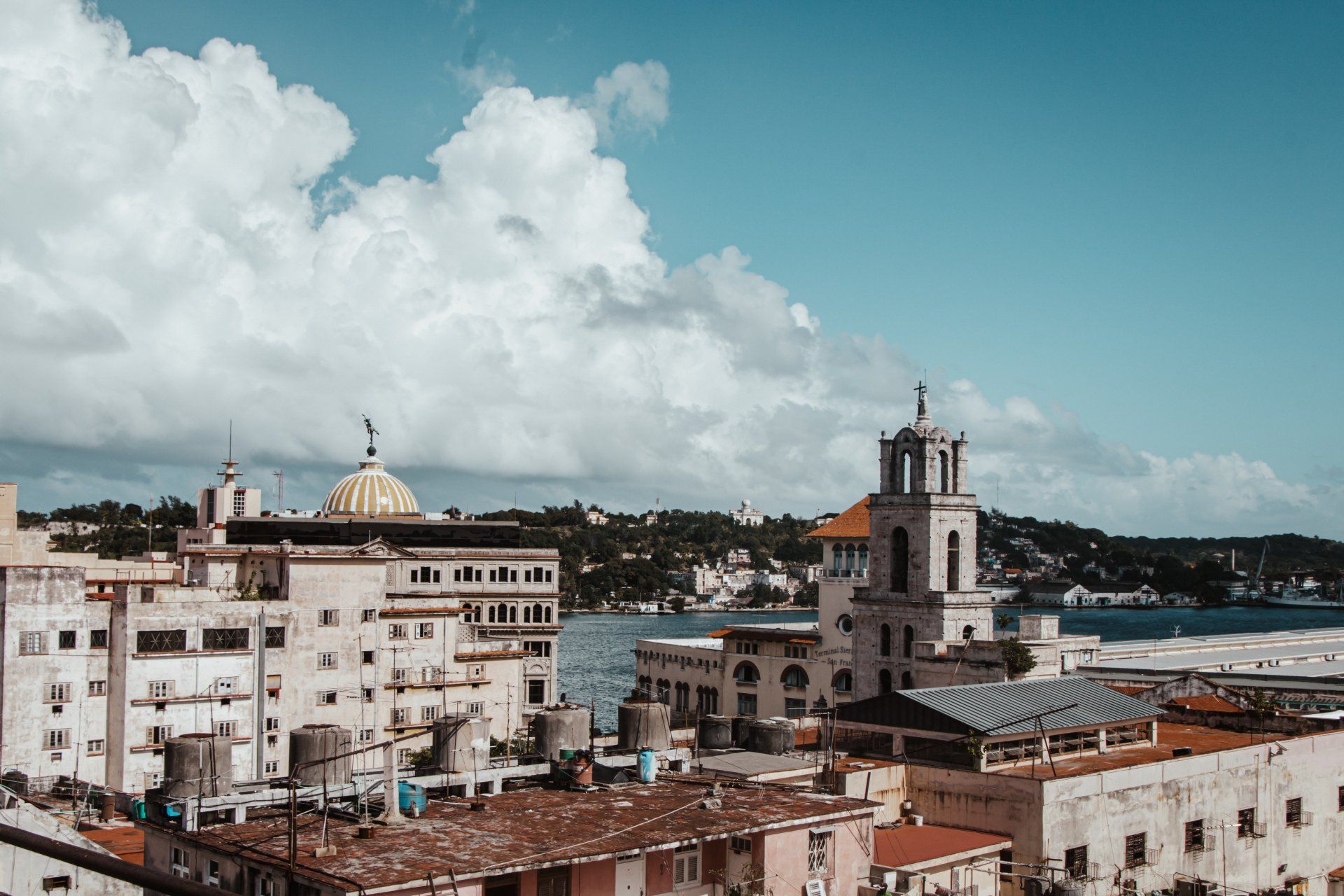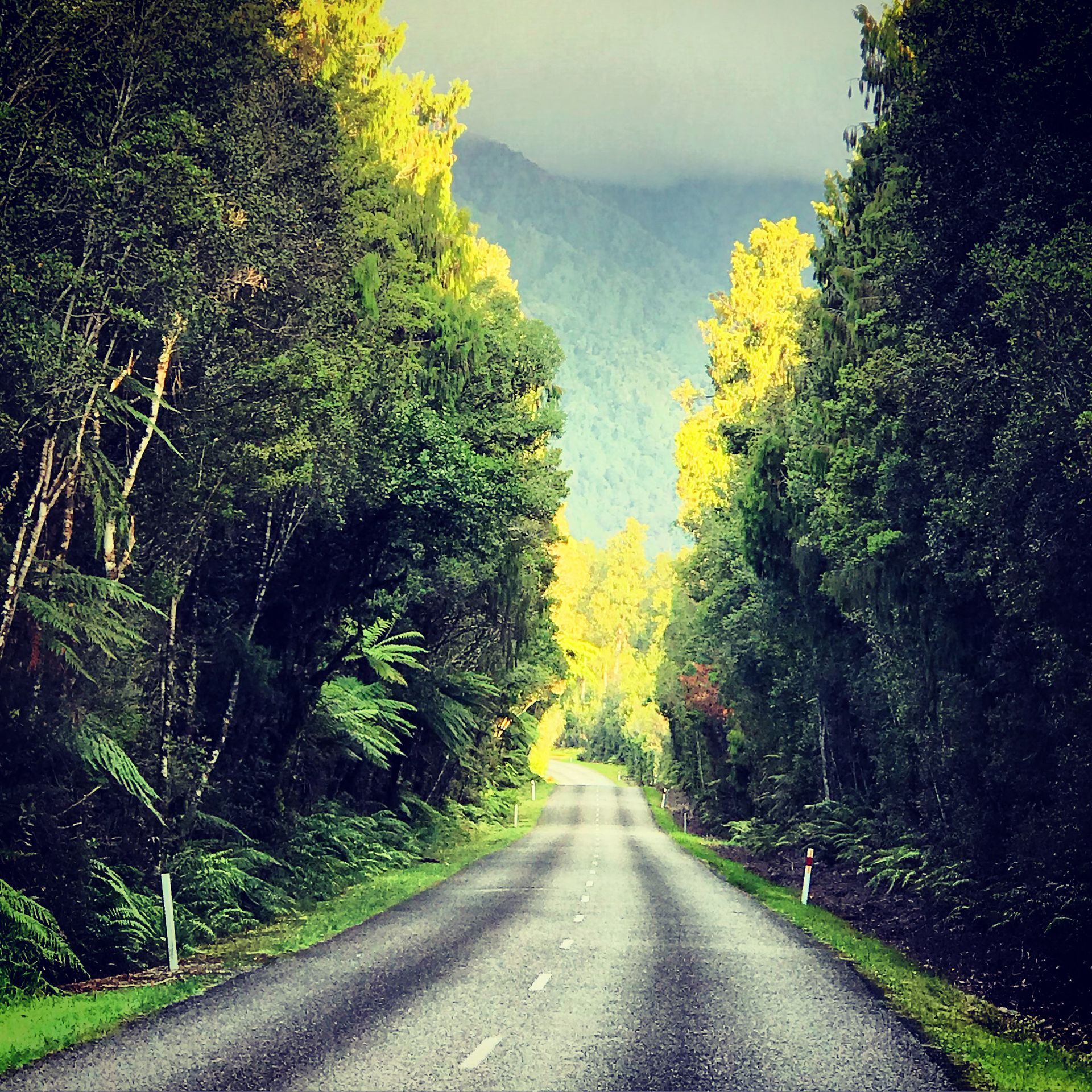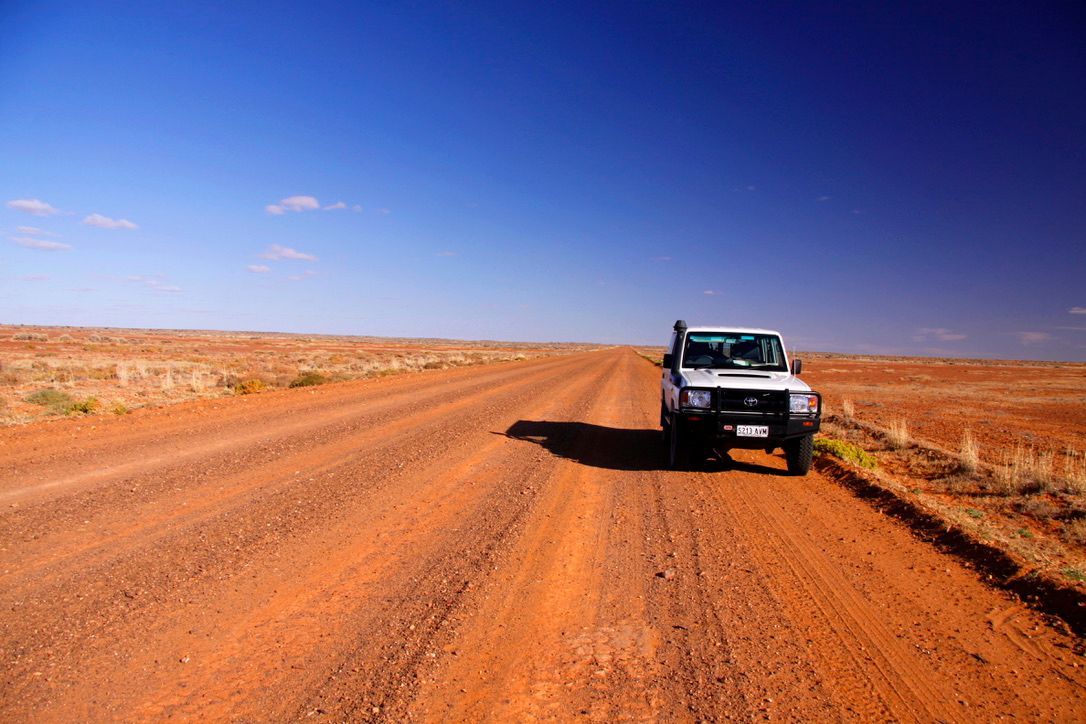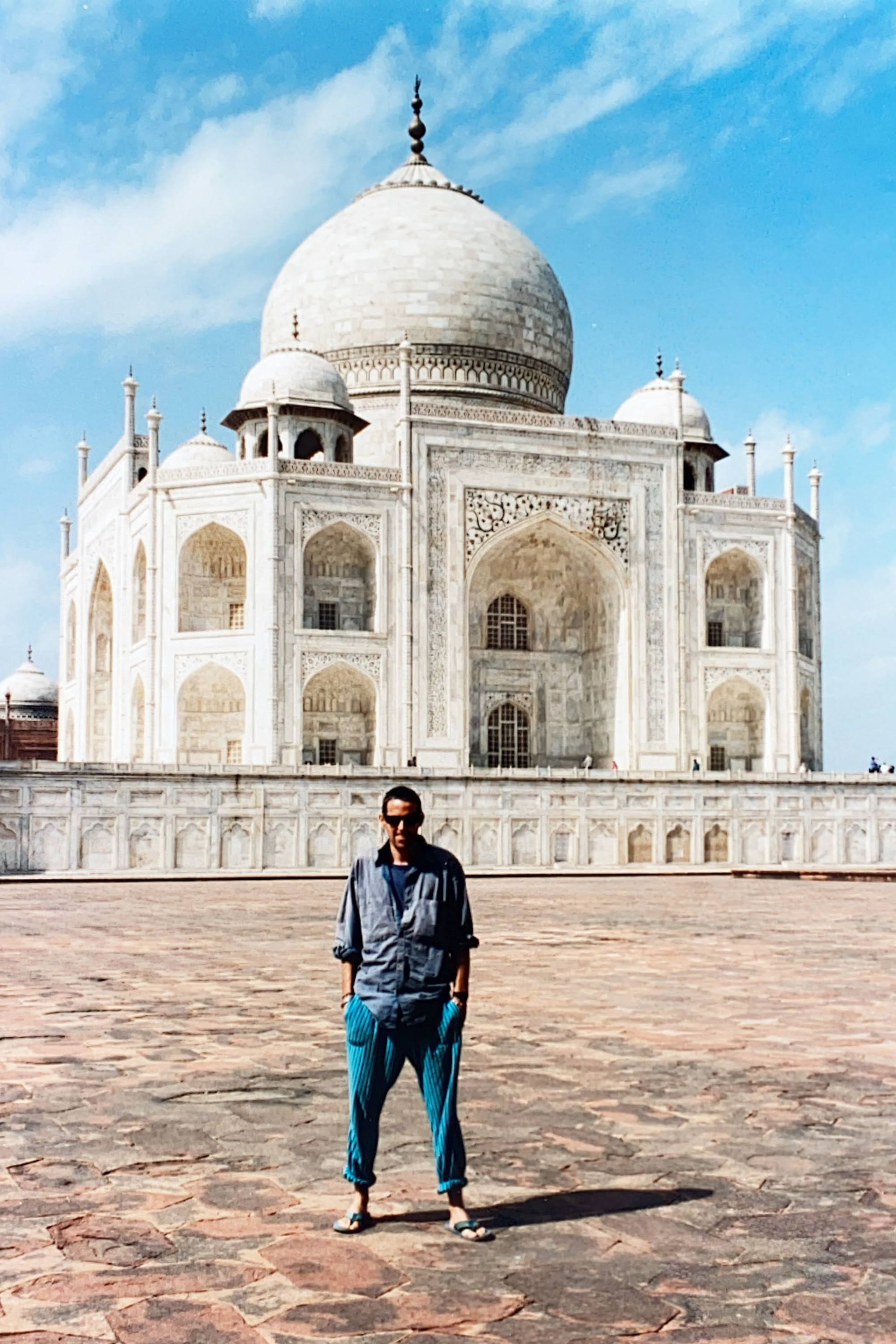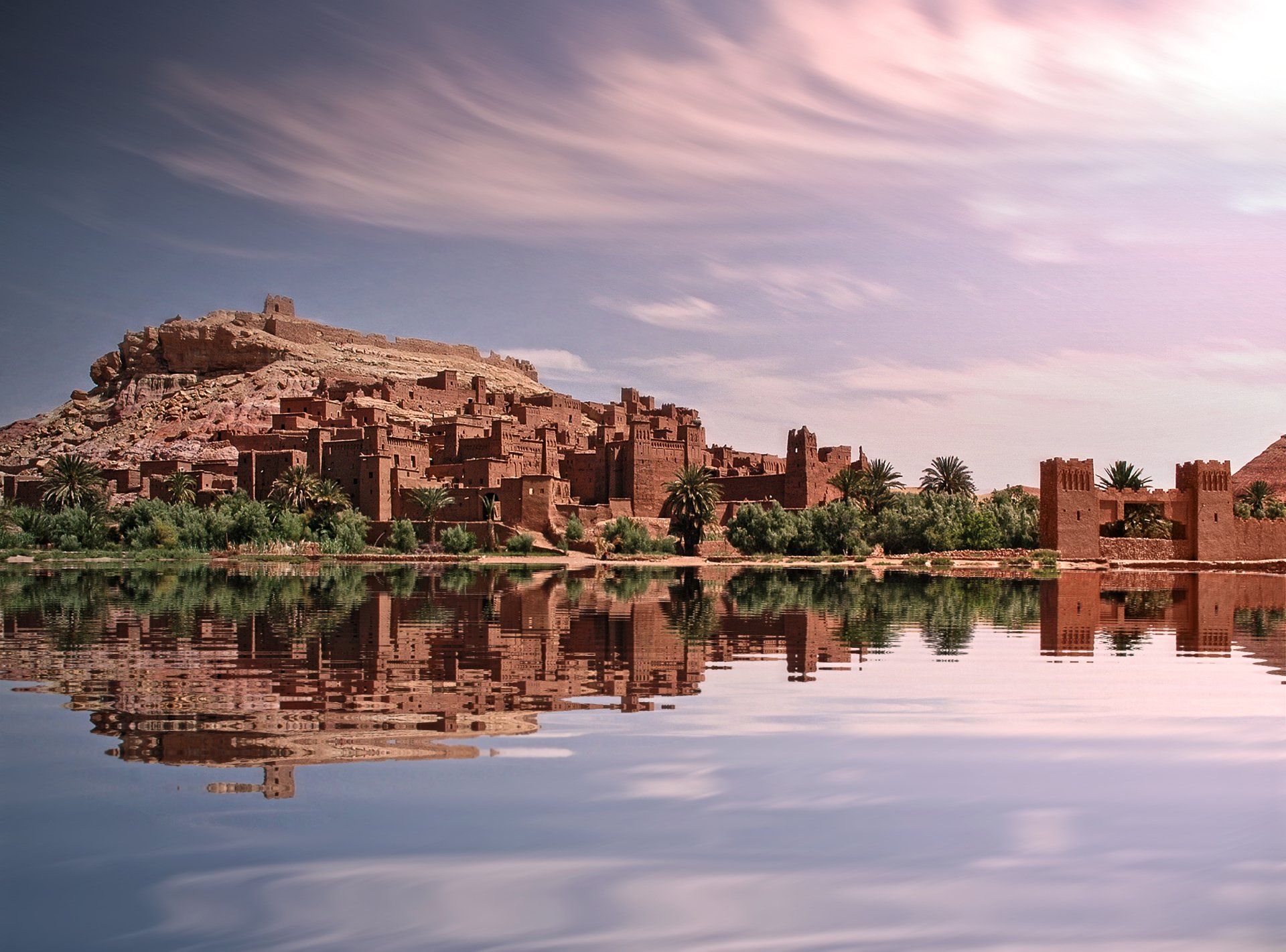The finest workers in stone are not copper or steel tools,
but the gentle touches of air and water
working at their leisure
with a liberal allowance of time.
– Henry David Thoreau
On a hot, humid morning, one hundred and eighty million years ago, a volcano standing on the edge of a primeval forest of primitive conifers on the eastern coast of the supercontinent of Gondwana, erupted with shattering violence. The blast wave from the eruption spread out from the volcano’s conical slopes. Traveling at the speed of sound across the surrounding country, it flattened everything in its path. Trees were snapped off at ground level and flung down into haphazard rows. The heat of the blast instantly incinerated the foliage, their ashes blown into dust. The blackened plain was stripped to bare soil. Chunks of pumice and incandescent blobs of lava rained down on the devastated landscape. The sun was blotted out by a roiling plume of pulverized rock, dust and poisonous gas, lit by jagged bolts of lightning, which reached the stratosphere and was torn away by the jet stream to encircle the Earth.
Worse was to come. Mudslides raced down the volcano’s sides, engulfing everything that remained in a cloying, anaerobic blanket. These lahars, as geologists call them, completed the work begun by the volcano’s blast. The flattened trees, the tree stumps, even the very soil of the plain, was buried under a thick layer of mud. The volcano continued to erupt. Lava flows covered the landscape. Rivers rose and fell, spreading sediment and gravel across the plain. Gales blew for thousands of years, carrying dust and grit from distant mountains to accumulate in deep beds of loess.
Its perpendicular heights had been laid flat. And it had been turned to stone.
But as the millennia ticked slowly by, the radioactive core of the planet began to cool. The volcanoes ceased to erupt. Their magma pipes solidified into plugs of solid rock that would one day form otherworldly clusters of symmetrical, vaguely conical mountains. Things settled down a bit. The Earth continued on along the elliptical path of its orbit around the sun. And time began seriously to pass.
One hundred and eighty million years later, I awoke on the edge of a primeval shore of blackened reefs, pounding surf and a thin mist rolling off the sea onto a landscape frosted with ice. The air glowed pale pink above the coves of Curio Bay, fading up to a
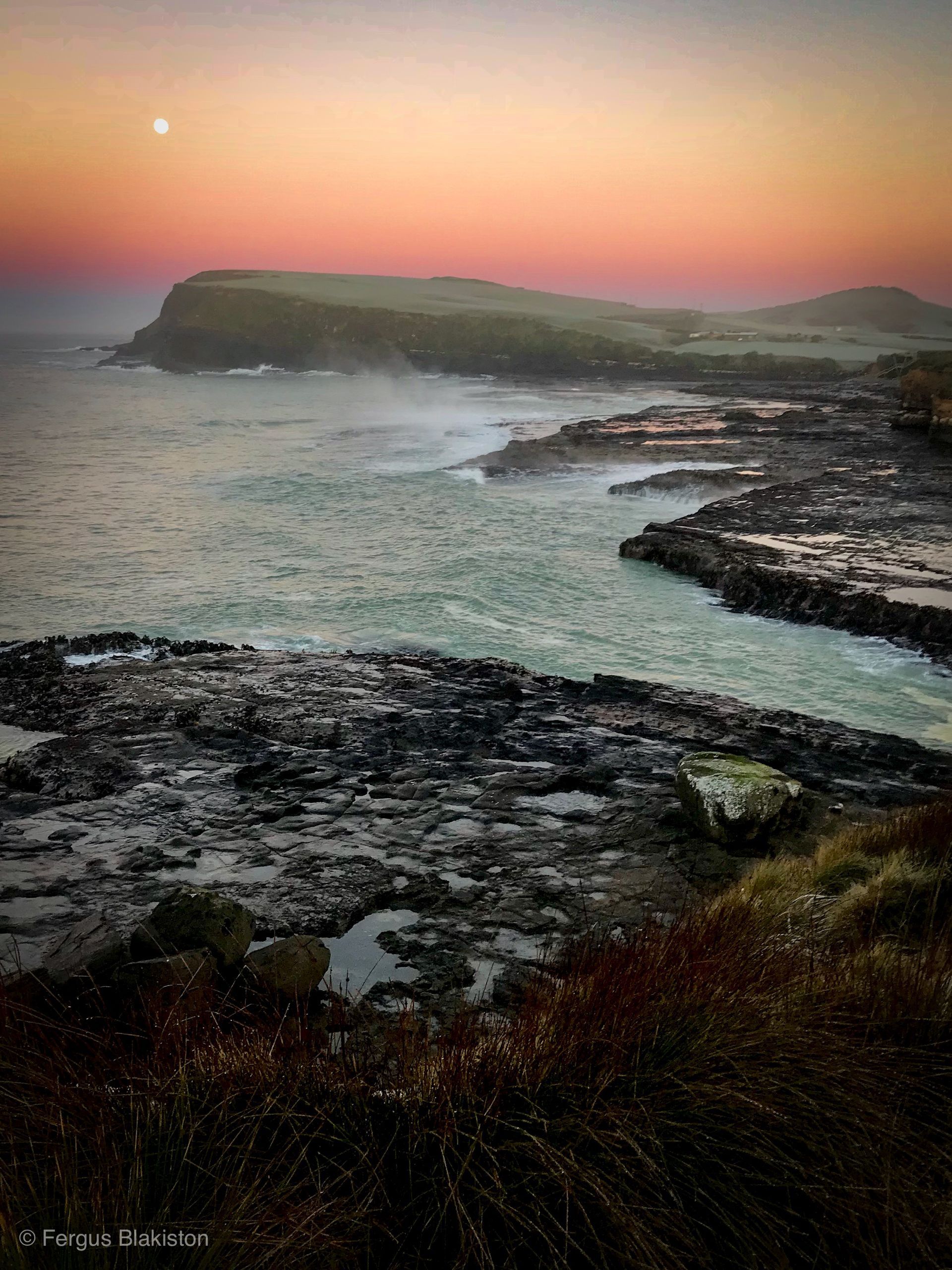
rich blue as light from the rising sun filtered into the sky. Inside my truck, a rime of frozen condensation decorated the windscreen. The temperature felt well and truly subzero.
I started the engine and lay with my sleeping bag pulled up tight around my neck while the heater thawed out the interior. Below the isthmus where I was parked, the sea sloshed back and forth into a narrow slot in the reef. The water spilled out over the surrounding rock like an over-flowing bath. I could see penguins hopping into the water and swimming briskly out through the waving forests of kelp to their fishing grounds. The ocean steamed like a young man’s dreams.
Later, after a reborative latte, hot and hot, full of sugar, and served up with a plate of toast, butter and jam, I set of along the cliff top though groves of rustling flax to the southern end of the bay. I descended a steel staircase to the reef, exposed by the receding tide, and walked out into the forest that had stood there so long ago.
The trees lay in the haphazard rows where they had fallen. Their stumps protruded from the soil beside them. It was as if I was standing there alone in a sylvan glade, with the sunlight filtering down and the sound of birds echoing around. The only difference was that this was a horizontal forest. Its perpendicular heights had been laid flat. And it had been turned to stone.
On that distant day when the forest had been overwhelmed by the lahars, the fallen trees, the tree stumps, and even the soil was buried in a layer of volcanic ooze devoid of oxygen. As oxygen is required in order to make organic material decompose, the buried forest had simply lain there, inert, encased in its sterile cocoon of mud. As time passed and the volcanic conniptions above had quieted then ceased, a process began which would completely replace the stem tissue of the trees with minerals. This process. known as permineralization, retains the original cell structure of the parent tissue, but replaces it with silicates such as quartz.
The permineralization, or petrification, process can only occur underground and takes millions of years to complete. The rivers which flowed across that ancient landscape were rich in the minerals required to petrify the tissue of the buried forest. As the mineral-laden water permiated through the layers of mud, the minerals began replacing the lignin and cellulose in the plant tissue, forming a kind of stone mould which retained the shape of the cells down to a microscopic level. Elements such as chromium, manganese, carbon, iron and copper created different hues in the petrified tree trunks.
The tree stumps
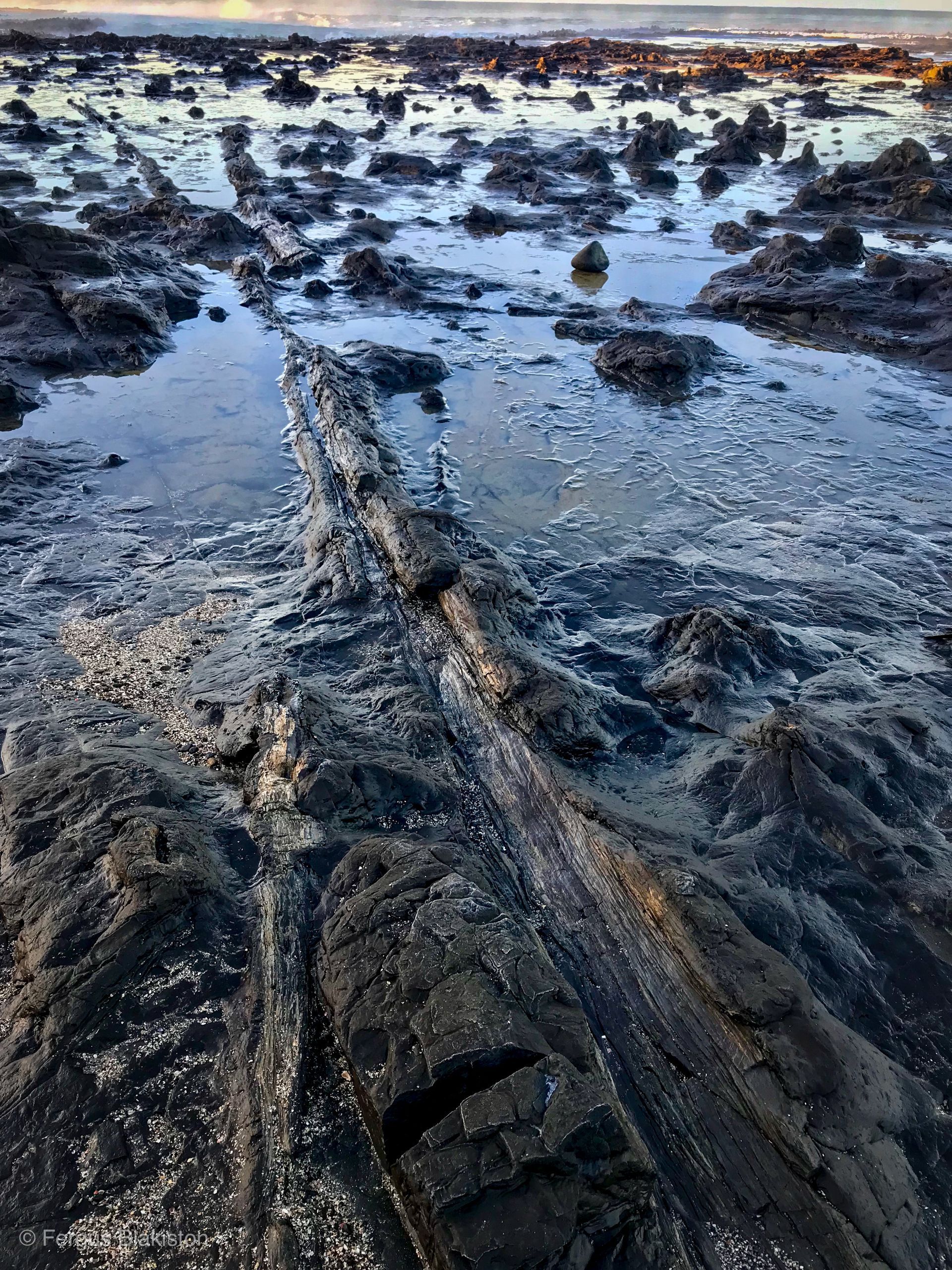
underwent an identical process, which preserved and petrified them in the ground where the trees had stood. Even the soil, which is, of course, organic material, became petrified. But while this unhurried, gentle transformation was taking place at a cellular level, another bigger, more ambitious transformation was going on around it. The rocks where the trees lay, the volcanoes and, indeed, a big chunk of Gondwana itself, was on the move.
The the lump of continental crust that would one day be known as Zealandia lay on the eastern side of Gondwana. For millions of years this massive supercontinent, itself a remnant of another former supercontinent, Pangea, had wandered the globe: a gigantic raft of rock floating on a subterraneann ocean of magma. Eighty million years had passed since that summer day when the volcano had erupted and buried the trees. As the eons ticked by, ranges of mountains were eroded by wind and frost, ice and water. Their sediments were washed into shallow depressions in the continent’s surface, accumulating layer upon heavy layer and pressing down on the crust beneath. As the weight increased, the crust began to stretch and become thinner. Continual faulting and rifting created a basin into which the sea flooded. Elsewhere on Gondwana, the continental blocks that would one day become Australia and Antarctica were also in the process of separating from their mother continent. But out on the eastern coast, as the inland sea grew wider and wider, New Zealand and Australia would now forever be separated by an ocean.
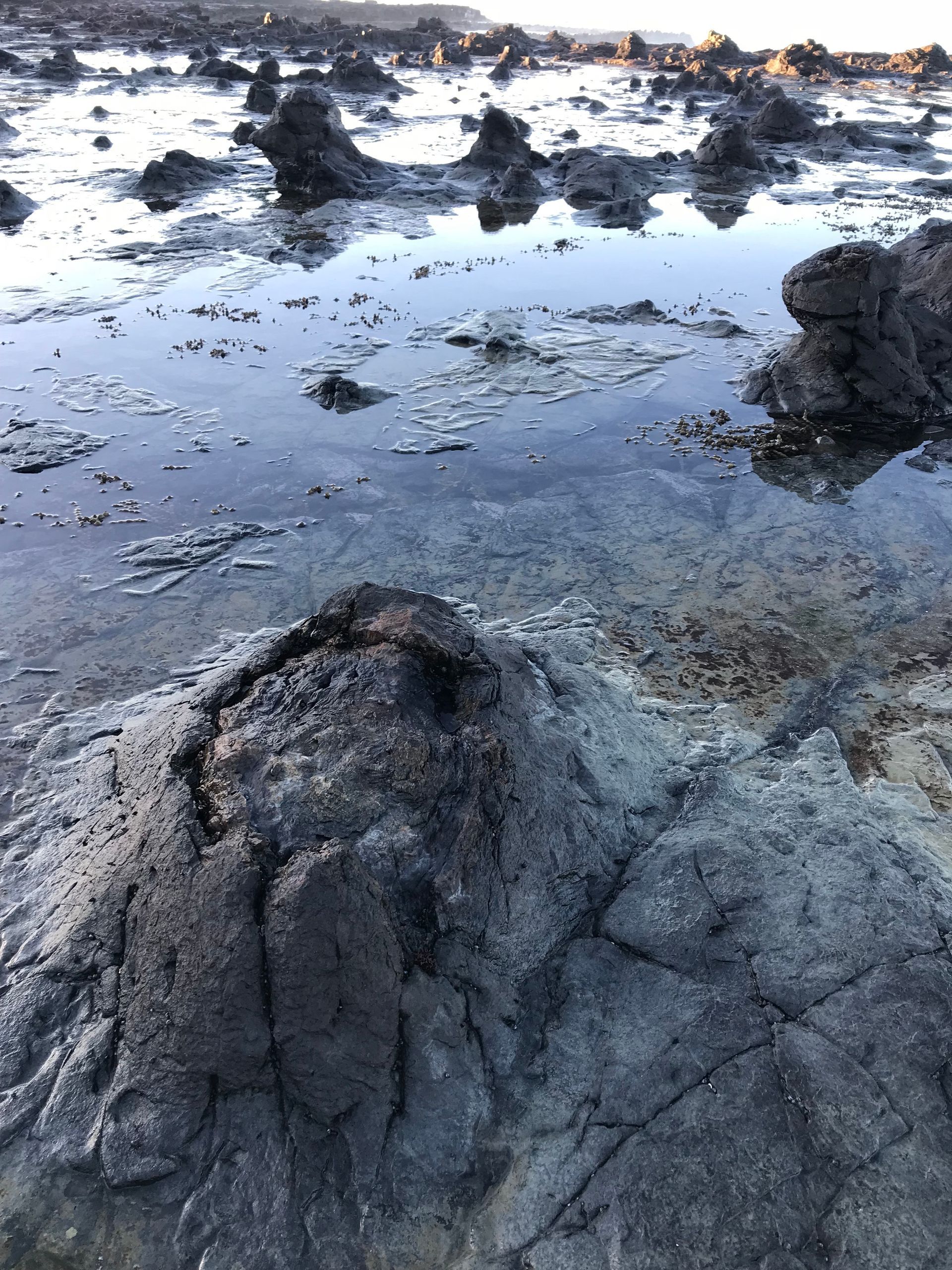
Around seventy-five million years ago, Zealandia was completely separated from the remains of Gondwana. The seafloor between the two continental blocks continued to spread apart, pushed by upwellings of new rock on the fault line between the Indo-Australian Plate and the Pacific Plate. On this slow-moving porridge-pot of rock, constantly subsiding and cracking and bubbling, the tiny chunk containing the petrified trees rode. By forty million years ago it was roughly in the position it occupies now, albeit still buried deep in the floating crust. As New Zealand came to a halt, a new tectonic fault grabbed it like a slewing truck, sliding half of it northwards to form the North Island. As the Pacific plate shoved against this new fault, the rocks surrounding the ancient, lithified trees were thrust upwards to the surface. The scene was set for the trees to re-emerge for me to stand on, one-hundred and eighty million years after they had been buried.
…with me standing there in a clearing like a character from a science fiction film.
There was one final stage of the process. The surrounding rocks needed to be stripped away from the petrified trees, stumps and soil. For that to occur, some decent erosion was required. And for that, you need some big, energy-laden waves. Luckily, plate tectonics had sorted that out as well. The Gonwandan remnant that made up Australia and Antarctica had been split apart by tectonic action separate from that which had been working on Zealandia in general and New Zealand in particular. As Antarctica wandered off from Australia like a runaway child, oceanic currents began to circulate around it. These currents, known as the Antarctic Circumpolar Current, effectively isolated Antarctica, upon whose shores tropical forests had once flourished, from the warmth of Australia and South America. The continent froze.
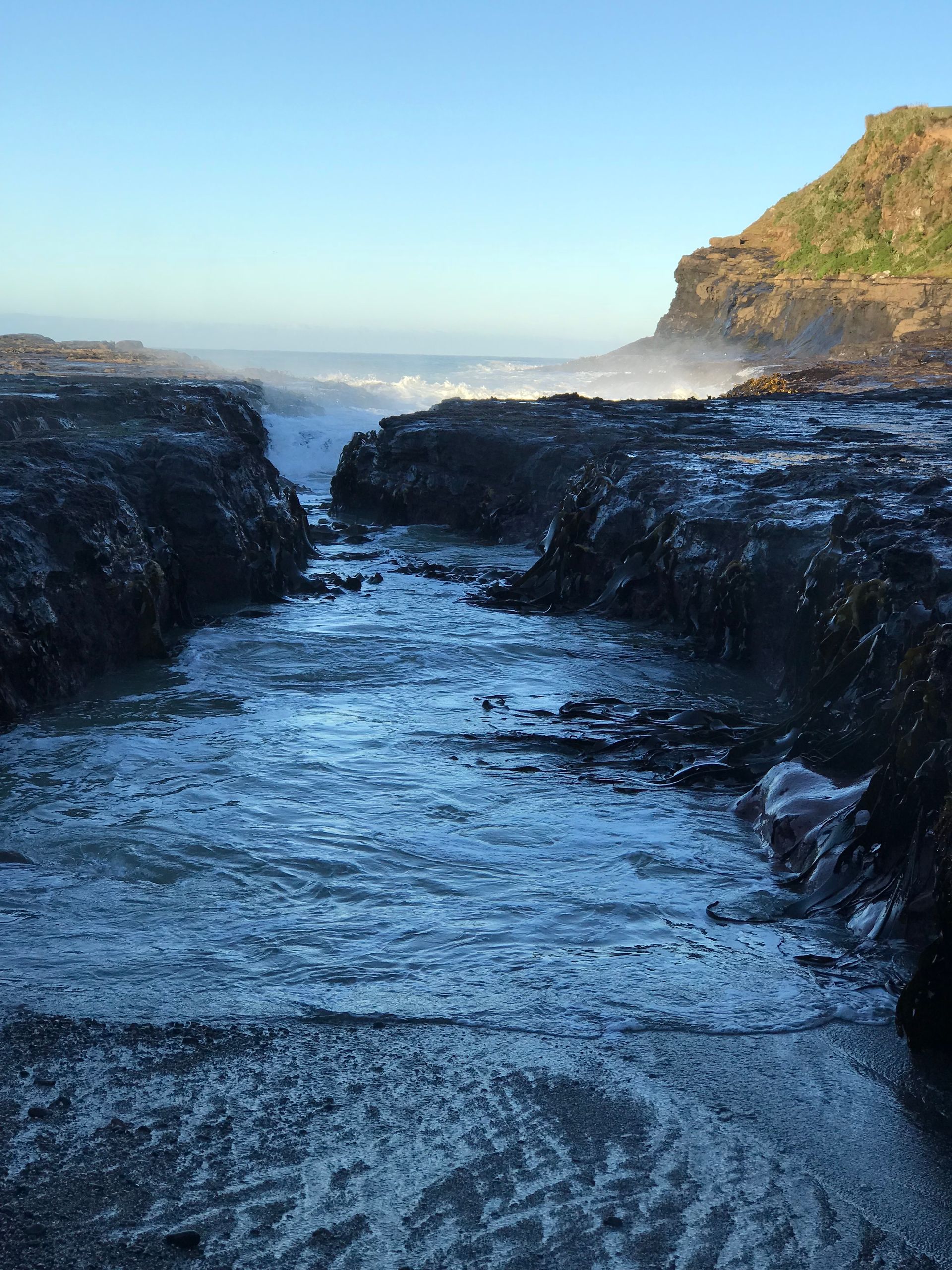
Frigid storms wracked the cold waters around Antarctic, generating huge seas whose waves, propagating outwards, smashed into the southern coast of the South Island. The energy contained in the waves began eroding the rocks surrounding the petrified trees, exposing them to daylight once more. They chipped and gnawed at the coastline, creating Curio Bay and nearby Porpoise Bay, and carving out the fretwork of cracks and fissures in the rocky platform where the trees lay.
I stood there now, watching the waves surging up onto the rocks. A flock of seagulls, looking like the black and white keyboard on an eighties synthesizer, fluttered and fussed just out of reach of the waves. Pools of water, left by the receding tide, lay around the trees. The sun glittered on their trunks and branches. The woodgrain stood out as clearly as a piece of new timber on a wood-turner’s lathe. The stumps were also plainly visible, their outer skin of bark and sapwood distinctly different in texture from the heartwood within. The surrounding soil, lithified just like the trees, formed carpets of raised grey nodules between the stumps.
I lingered there among the old trees for ages. Well, that is to say I lingered for an hour or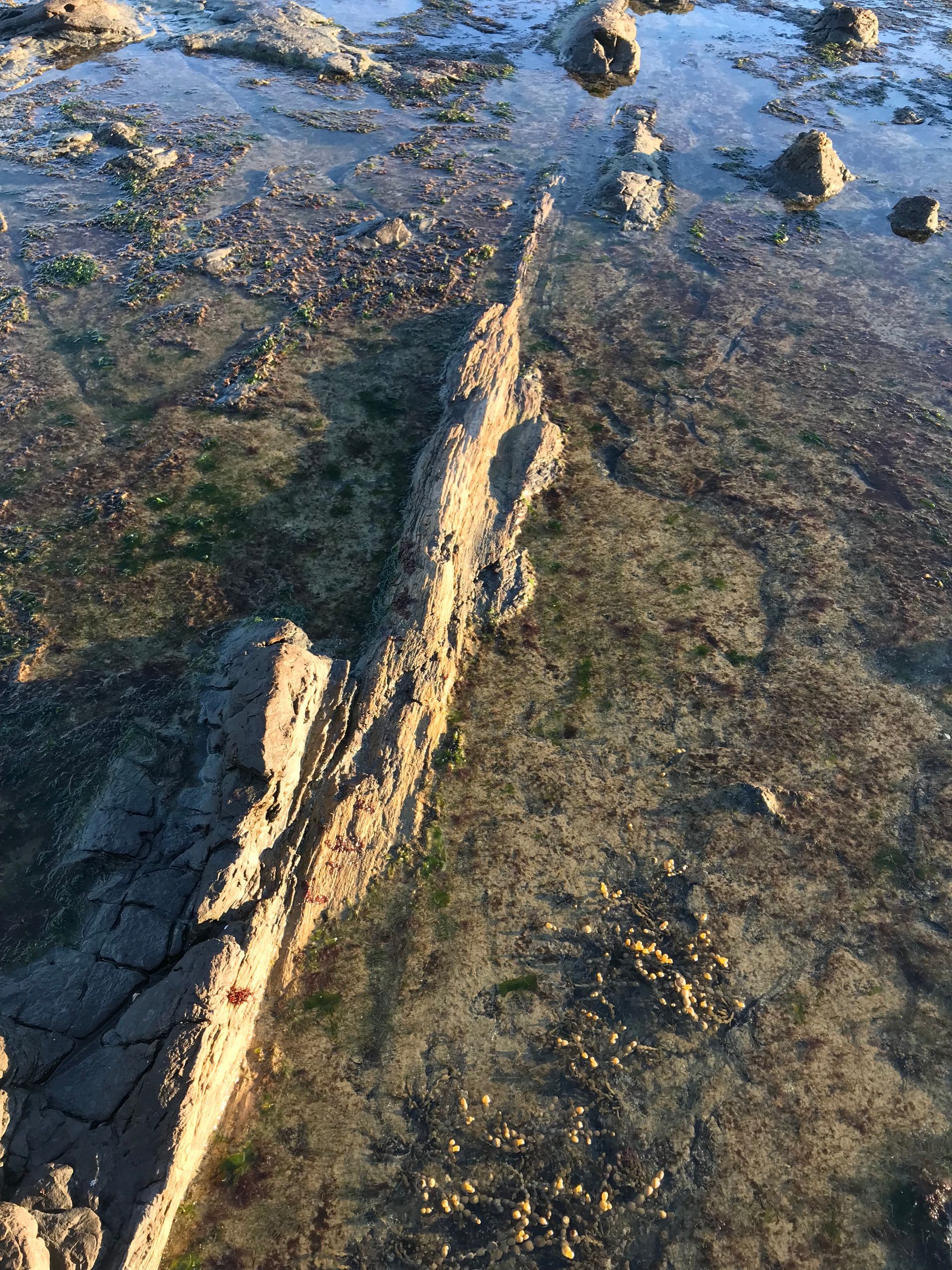 so at least: The term “ages” being a highly relative term when I considered just how long the trees had lain there and the stupendous journey that they had been on. I couldn’t escape from the image they conjured in my mind of a quiet stand of forest, with a warm mesh of dappled sunlight filtering down, with me standing there in a clearing like a character from a science fiction film. I imagined the camera panning around me as I looked up into the towering canopy, with a flare of light coming into the wide-angle lens.
so at least: The term “ages” being a highly relative term when I considered just how long the trees had lain there and the stupendous journey that they had been on. I couldn’t escape from the image they conjured in my mind of a quiet stand of forest, with a warm mesh of dappled sunlight filtering down, with me standing there in a clearing like a character from a science fiction film. I imagined the camera panning around me as I looked up into the towering canopy, with a flare of light coming into the wide-angle lens.
But then, alas, I was jolted back into reality by the wash of a wave coming over the rock platform and the arrival of a the first tour group of the day. I toyed with the idea of zapping them with my imaginary phaser but decided against it. So with my tricorder in my hand, I climbed the steel steps back up to the present day and set off north to find some trees that were still living.
